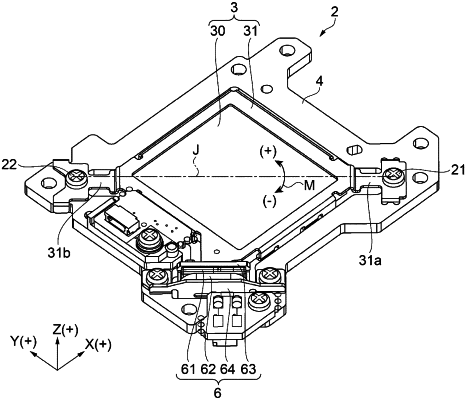| CPC G03B 21/142 (2013.01) | 11 Claims |

|
1. A method for controlling an optical device including a movable frame including an optical path changing plate that refracts incident video image light in accordance with an angle of incidence of the video image light and outputs the refracted video image light and a holding frame that supports the optical path changing plate, and an actuator that causes the movable frame to swing, the method comprising
applying a drive signal to the actuator to cause the movable frame to swing,
wherein the drive signal is a trapezoidal wave having a low-potential flat section, a high-potential flat section, a rising leg section that transitions from the low-potential flat section to the high-potential flat section and a falling leg section that transitions from the high-potential flat section to the low-potential flat section,
the rising leg section of the trapezoidal wave has a first straight line rising from the low-potential flat section and a second straight line connected to the first straight line,
in the rising leg section, inclination of the second straight line with respect to the low-potential flat section of the trapezoidal wave is smaller than inclination of the first straight line with respect to the low-potential flat section of the trapezoidal wave,
the falling leg section of the trapezoidal wave has a first straight line falling from the high-potential flat section and a second straight line connected to the first straight line thereof, and
in the falling leg section, inclination of the second straight line with respect to the high-potential flat section of the trapezoidal wave is smaller than inclination of the first straight line with respect to the high-potential flat section of the trapezoidal wave.
|